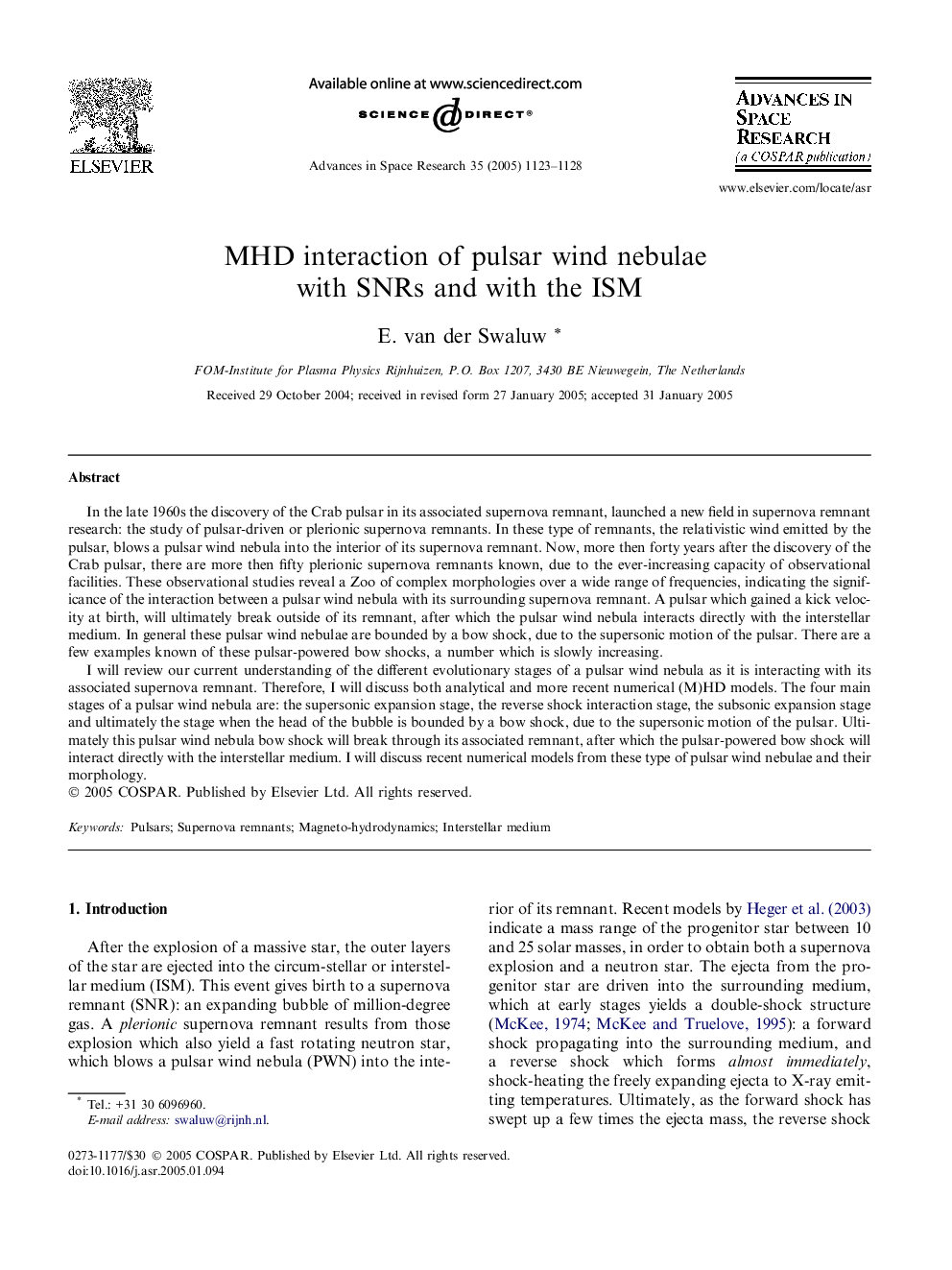| Article ID | Journal | Published Year | Pages | File Type |
|---|---|---|---|---|
| 10695962 | Advances in Space Research | 2005 | 6 Pages |
Abstract
I will review our current understanding of the different evolutionary stages of a pulsar wind nebula as it is interacting with its associated supernova remnant. Therefore, I will discuss both analytical and more recent numerical (M)HD models. The four main stages of a pulsar wind nebula are: the supersonic expansion stage, the reverse shock interaction stage, the subsonic expansion stage and ultimately the stage when the head of the bubble is bounded by a bow shock, due to the supersonic motion of the pulsar. Ultimately this pulsar wind nebula bow shock will break through its associated remnant, after which the pulsar-powered bow shock will interact directly with the interstellar medium. I will discuss recent numerical models from these type of pulsar wind nebulae and their morphology.
Related Topics
Physical Sciences and Engineering
Earth and Planetary Sciences
Space and Planetary Science
Authors
E. van der Swaluw,
